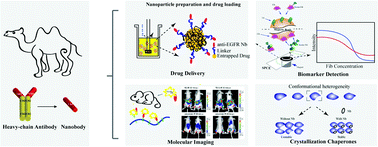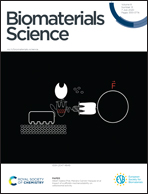Nanobodies derived from Camelids represent versatile biomolecules for biomedical applications
Abstract
Nanobodies are antigen binding variable domains of heavy-chain antibodies without light-chains, and these biomolecules occur naturally in the serum of Camelidae species. Nanobodies have a compact structure and low molecular weight when compared with antibodies, and are the smallest active antigen-binding fragments. Because of their remarkable stability and manipulable characteristics, nanobodies have been incorporated into biomaterials and used as molecular recognition and tracing agents, drug delivery systems, molecular imaging tools and disease therapeutics. This review summarizes recent progress in this field focusing on nanobodies as versatile biomolecules for biomedical applications.



 Please wait while we load your content...
Please wait while we load your content...